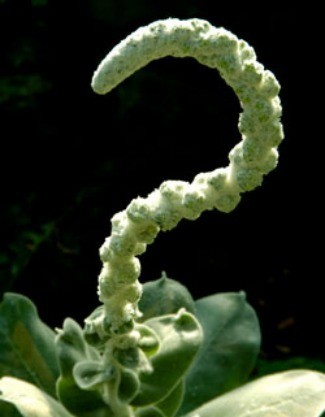
What's the difference between a tree and a shrub? Is a tomato a fruit or a vegetable? What makes pepper hot? These are just some of the interesting questions that gardeners may or may not ponder while on their knees pulling weeds. Read on for the answers to these and other seldom asked gardening questions.
Trees are woody, perennial plants that have one central stem, are generally more than 12 feet in height, and normally have a distinct head. Shrubs are woody, perennial plants that have a number of stems usually produced from near the soil line of the plant. Shrubs are generally less than 12 feet in height, but are capable of reaching heights of 20 feet or more.
Oaks, because they tend to grow taller than most other trees. They also have a deep central root as well as hollow water-filled cells that run up and down the wood of the oak's trunk. These two qualities make oak trees better conductors (and better grounded) than trees with shallow roots and closed cells.
The expression "knock on wood" is used to avoid bad luck after boasting or speaking about one's good fortune. The expression is usually used in the hope that good circumstances will continue to occur after good fortune has been acknowledged (e.g. "It looks like the hair storm will miss us," 'knock on wood', or 'knock on wood', "I'm feeling much better now.") The expression is thought to have Christian or Irish origins, although its also been linked to a pagan superstition involving tree spirits.
A Sequoia named General Sherman. The tree is 272 feet (83 m) tall with a trunk measuring 35 feet (11 m) in diameter and 109 feet (33 m) in circumference at the base. It contains and estimated 600,000 board feet of timber, (enough to build 120 average-sized houses), and weighs nearly 1400 tons (the equivalent to 15 adult blue whales, 10 diesel-electric train locomotives, or 25 average-sized military battle tanks).
An alkaloid called Capsaicin (kap-SAY-iss-in). It's found in bell peppers, too, but in much lower concentrations. The amount of capsaicin a pepper contains is dependant on geographical location, climate conditions and the age of the pepper. Peppers grown in warmer climates (especially with warm nighttime temperatures) contain higher amounts of capsaicin than the same peppers grown in cool climates. Older peppers also contain higher amounts of capsaicin than those picked early.
The expression comes from the fact that the inside of a growing cucumber can be as much as 20 degrees cooler than the outside air temperature on a warm summer day.
Technically (botanically), a tomato is a fruit. Legally, however, it's a vegetable. In 1893 the U.S. Supreme Court declared tomatoes vegetables because they were commonly eaten with a main course and not served as desserts. That, and the fact that tax could be collected on imported vegetables (tomatoes were heavily imported from the West Indies at the time), but not on imported fruits. Incidentally, according to the Guinness Book of World Records, the tallest recorded tomato plant measured 65 feet (Lancashire, England, on May 11, 2000), and the world's largest tomato "fruit" weighed in at 7 pounds, 12 ounces (Edmund, Oklahoma, in 1985).
Yes. Bananas are actually the world's largest herb. They are related to members of the orchid and lily family.
You might say they turn into frogcicles. When the temperature drops, ice crystals start to form in a frogs body. Their liver then fills the body up with a huge amount of glucose. This gooey substance acts like an anti-freeze. It protects the cells inside a frog from being cut or damaged by ice crystals and enables it to freeze solid. As soon as the weather warms up, a frog's body transfers the glucose back to the liver where it is stored for next winter and the frog resumes normal spring activities.
Hummingbirds need a lot of energy to maintain a balanced state of health. They need to eat at least 1.5 to 3 times their body weight in food per day to keep up with their fast metabolism. Although they can feed from as many as 1,500 flower per day, the number is probably closer to the hundreds. When food isn't available, hummingbirds can slow down their heart rate and lower their body temperature in order to conserve energy. This sleepy state is called torpor.
Thirty times-the rough equivalent of turfgrass that's three feet tall. On average, adults spend 3.8 hours per week during the spring and summer working on their lawn and garden.

About The Author: Ellen Brown is an environmental writer and photographer and the owner of Sustainable Media, an environmental media company that specializes in helping businesses and organizations promote eco-friendly products and services. Contact her on the web at http://www.sustainable-media.com
Add your voice! Click below to comment. ThriftyFun is powered by your wisdom!